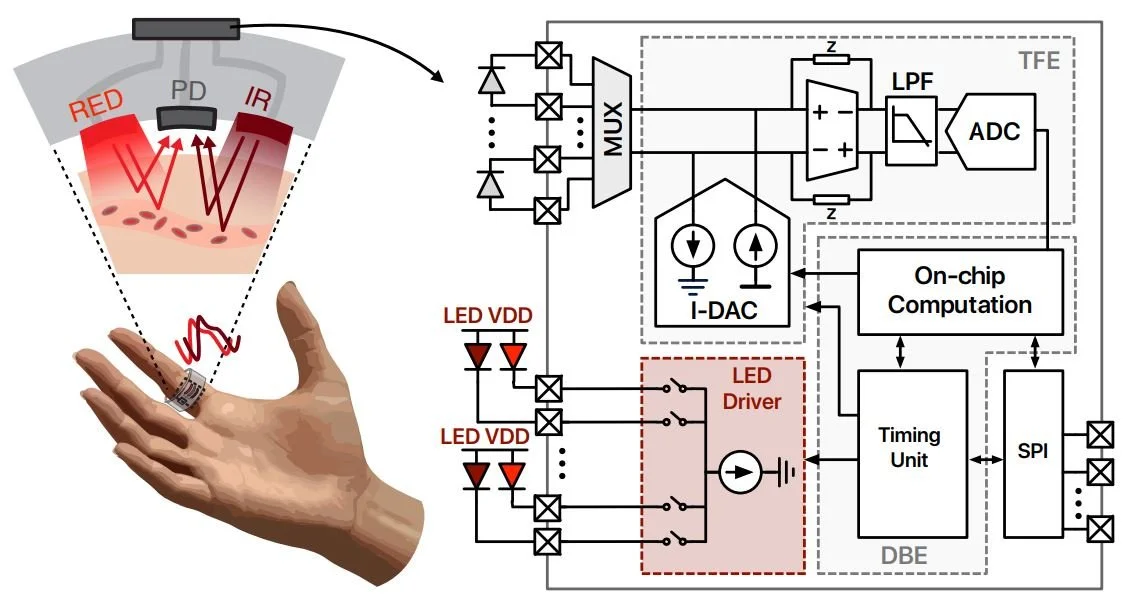Sina’s SpO2/HR monitoring paper now on arXiv
Sina’s paper on a sparse sampling sensor front-end IC for low power continuous SpO2 & HR monitoring is now available on arXiv. Read it here:
SF Alamouti, J Jan, C Yalcin, J Ting, AC Arias, R Muller, “A Sparse Sampling Sensor Front-end IC for Low Power Continuous SpO2 & HR Monitoring”. arXiv 2208.06698, Aug 2021.
Photoplethysmography (PPG) is an attractive method to acquire vital signs such as heart rate and blood oxygenation and is frequently used in clinical and at-home settings. Continuous operation of health monitoring devices demands a low power sensor that does not restrict the device battery life. Silicon photodiodes (PD) and LEDs are commonly used as the interface devices in PPG sensors; however, using of flexible organic devices can enhance the sensor conformality and reduce the cost of fabrication. In most PPG sensors, most of system power consumption is concentrated in powering LEDs, traditionally consuming mWs. Using organic devices further increases this power demand since these devices exhibit larger parasitic capacitances and typically need higher drive voltages. This work presents a sensor IC for continuous SpO2 and HR monitoring that features an on-chip reconstruction-free sparse sampling algorithm to reduce the overall system power consumption by ∼70% while maintaining the accuracy of the output information. The designed frontend is compatible with a wide range of devices from silicon PDs to organic PDs with parasitic capacitances up to 10 nF. Implemented in a 40 nm HV CMOS process, the chip occupies 2.43 mm2 and consumes 49.7 μW and 15.2 μW of power in continuous and sparse sampling modes respectively. The performance of the sensor IC has been verified in vivo with both types of devices and the results are compared against a clinical grade reference. Less than 1 bpm and 1% mean absolute errors were achieved in both continuous and sparse modes of operation.

